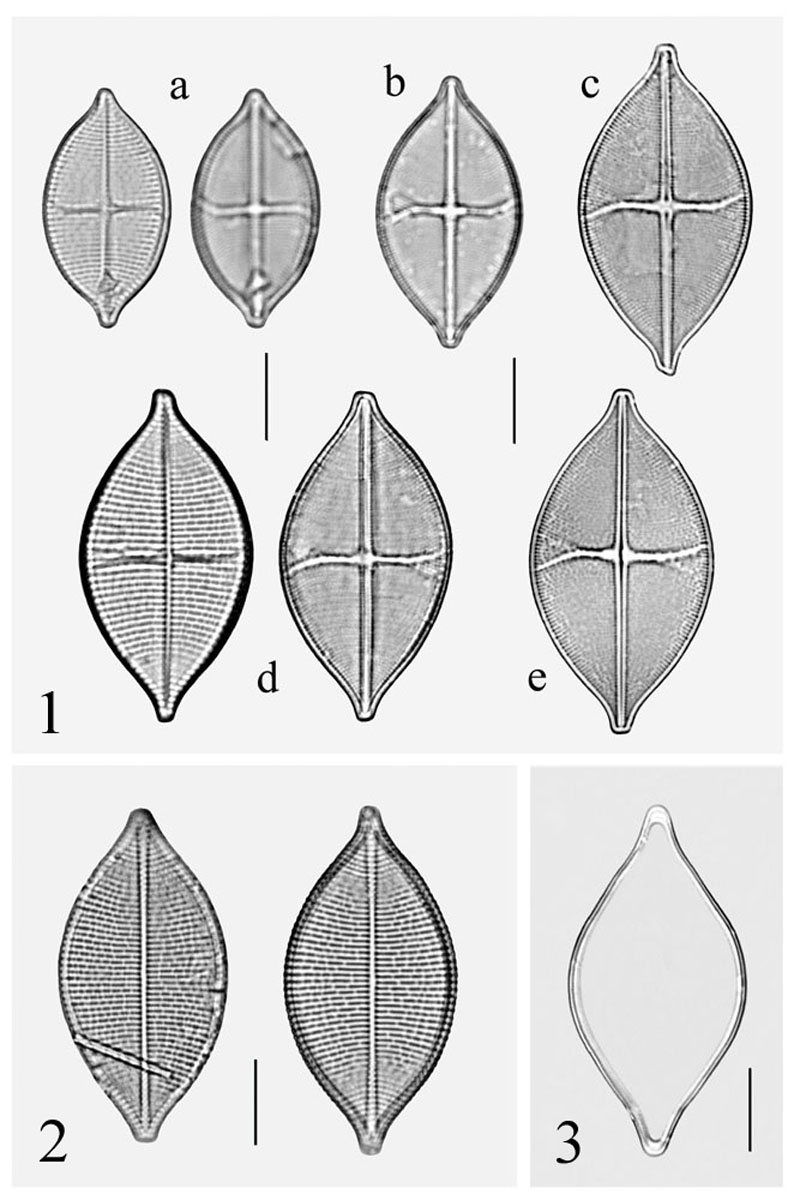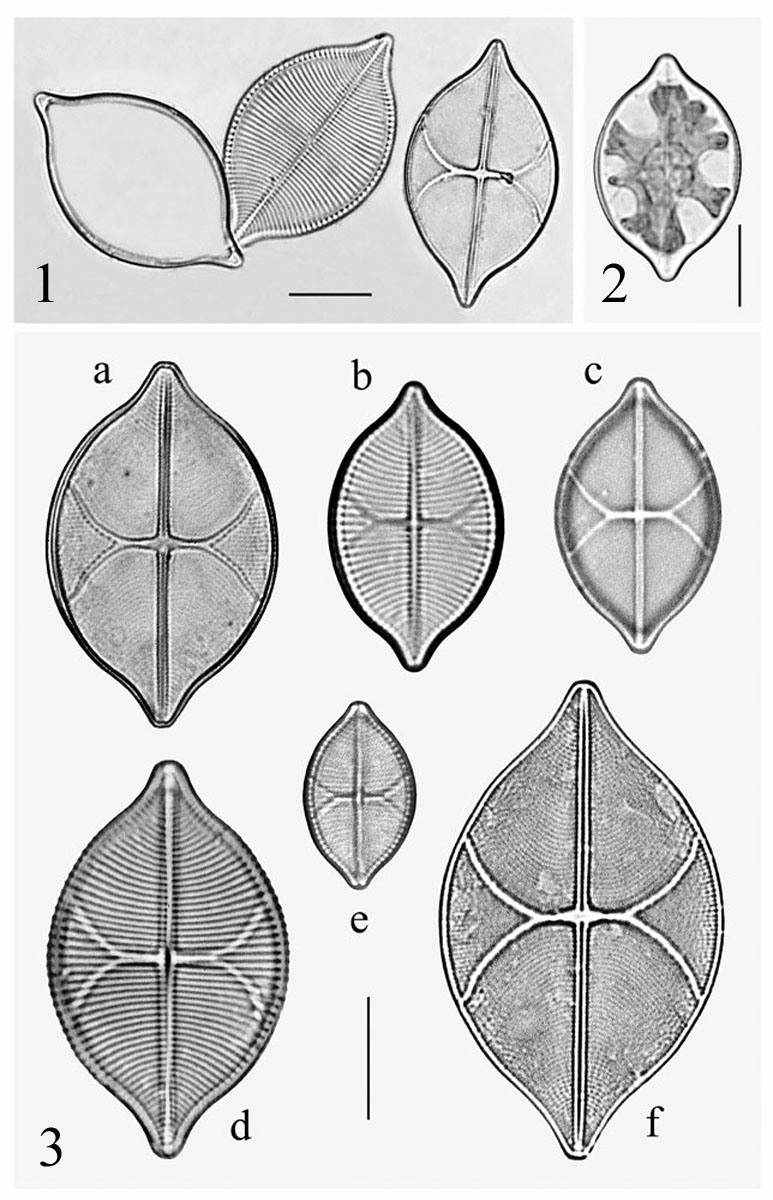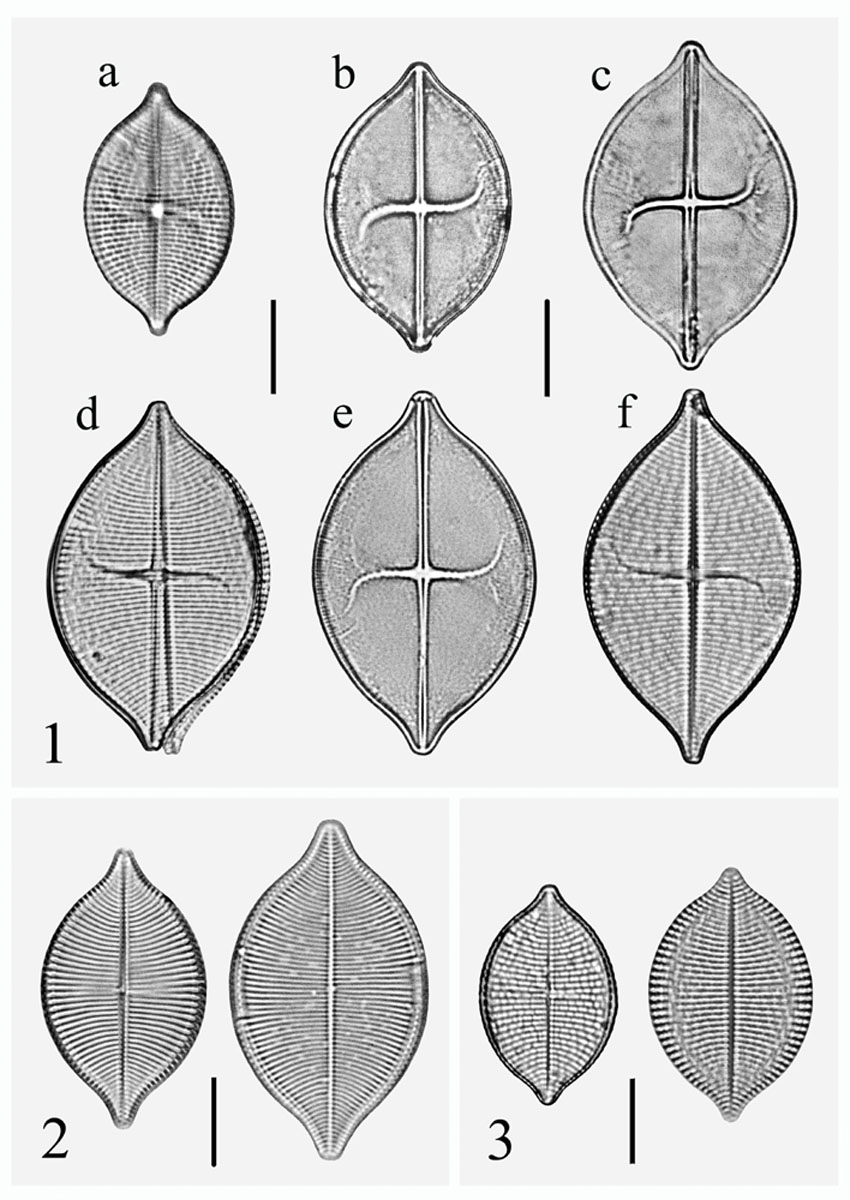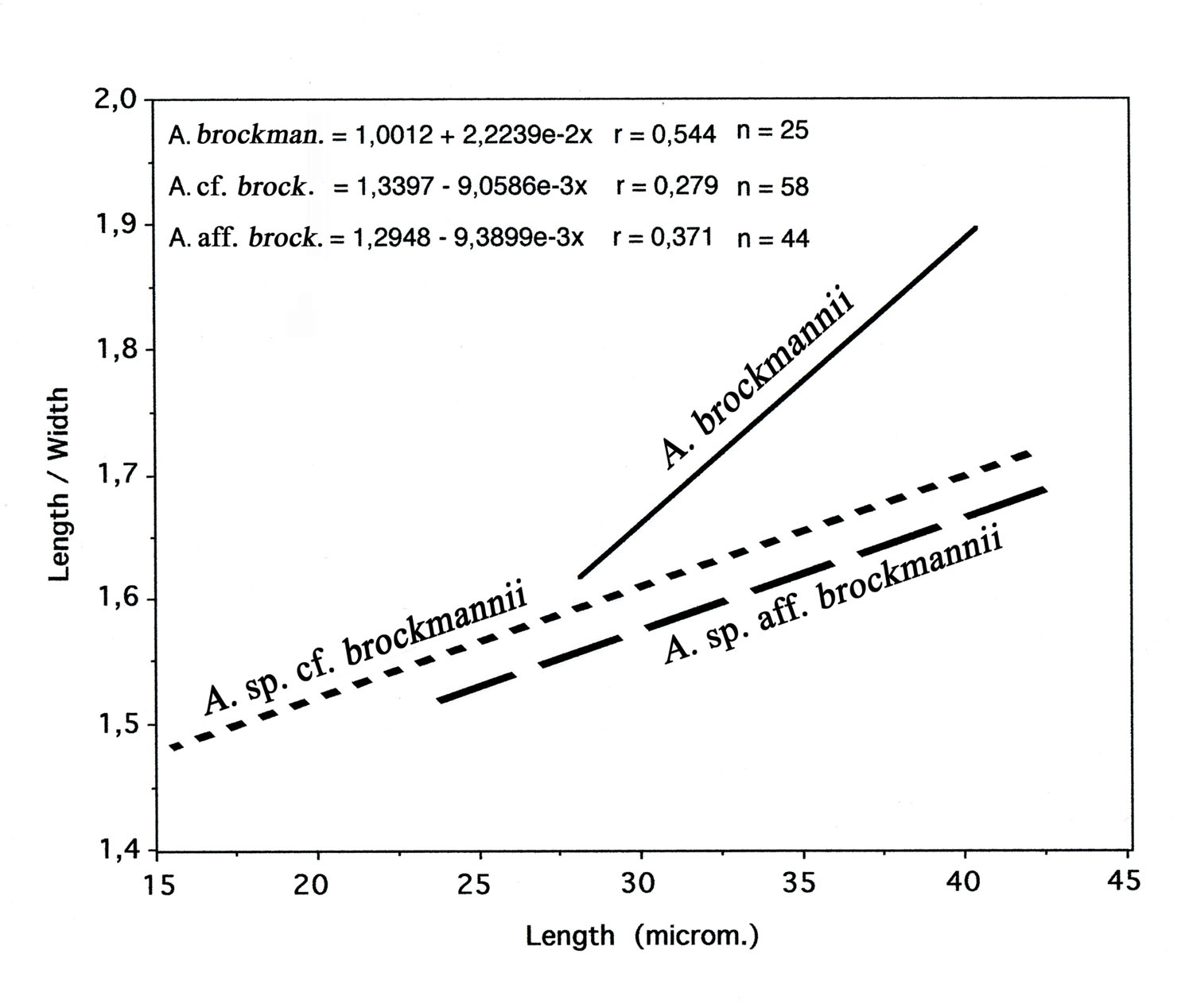Specimens of A. sp. cf. brockmannii were found in 26 samples collected between 5 and 23 meters deep. In most of these samples only some specimens were observed, excepted in three samples collected at 5, 9 and 10 meters deep where they were more numerous.
Some scarce specimens of A. sp. aff. brockmannii were found in 8 samples collected between 9 and 20 meters.
Achnanthes brockmannii Simonsen

Observed characteristics :
Frustules 28-40.5 µm long, 15-22.3 µm broad.
Rapheless valve : 12-15 striae / 10 µm.
Raphe valve : 22-25 striae / 10 µm.
Diagnose :
Frustules 40-53 µm long, 20-25 µm broad.
Rapheless valve : 12-13 striae / 10 µm.
Raphe valve : 20-27 striae / 10 µm.
The transapical striae of the rapheless valve are irregularly lineate.
Figures 1-3 : A. brockmannii :
Fig. 1 : Raphe valves (b,c,e) and frustules (a,d) with lengths between 27 and 39 µm.
Fig. 2 : Two rapheless valves (L = 39 and 42 µm).
Fig. 3 : Isolated girdle (L = 42 µm).
Achnanthes sp. cf. brockmannii :

Observed characteristics :
Frustules 15.5-41 µm long, 9.4-23.5 µm broad.
Rapheless valve : 16-20 striae / 10 µm.
Raphe valve : 22-26 striae / 10 µm.
The transapical striae of the rapheless valve do not appear to be lineate.
Figures 1-3 : A. sp. cf. brockmannii :
Fig. 1 : One dismantled frustule : girdle, rapheless valve and raphe valve. (L = 33 µm).
Fig. 2 : One live cell (L = 27 µm).
Fig. 3 : Raphe valves (a,c,f) and frustules (b,d,e) with lengths between 16 and 39 µm.
Achnanthes sp. aff. brockmannii :

Observed characteristics :
Frustules 23.8-42 µm long, 15-26.5 µm broad.
Rapheless valve : 14.5-19 striae / 10 µm.
Raphe valve : 23-26 striae / 10 µm.
The transapical striae of the rapheless valve are irregularly lineate.
Figs. 1 and 3 : A. sp. aff. brockmannii.
Fig. 1 :Raphe valves (b,c,e), frustules (d,f) and rapheless valve (a), with lengths between 27 and 40 µm.
Fig. 3 : Two Rapheless valves (L = 27 and 31 µm).
Fig. 2 : A. sp. cf. brockmannii : Two rapheless valves (L = 32 and 39 µm).
Variation of the length/width ratio as a function of the length of the frustules/valves for the 3 taxa :
Conclusion :
The length/width ratio as a function of the length, increases more rapidly for A. brockmannii than for A. sp. aff. brockmannii. This add an element in favour of the hypothesis that, although the central area of the raphe valves of these two taxa both form as a sigmoid fascia and that the striae of their rapheless valves are lineate, they would be different species.
The length/width ratio as a function of the length varies similarly for A. sp. cf. brockmannii and for A. sp. aff. brockmannii. However, the different shape of the central area of the raphe valves of these two taxa and the fact that the striae of the rapheless valves have a different structure in the two taxa, suggest that they would be also different species.
All the characteristics of A. brockmannii and of A. sp. cf. brockmannii point out that these two taxa are also different species.
So, we propose that A. sp. cf. brockmannii and A. sp. aff. brockmannii are two new species.
